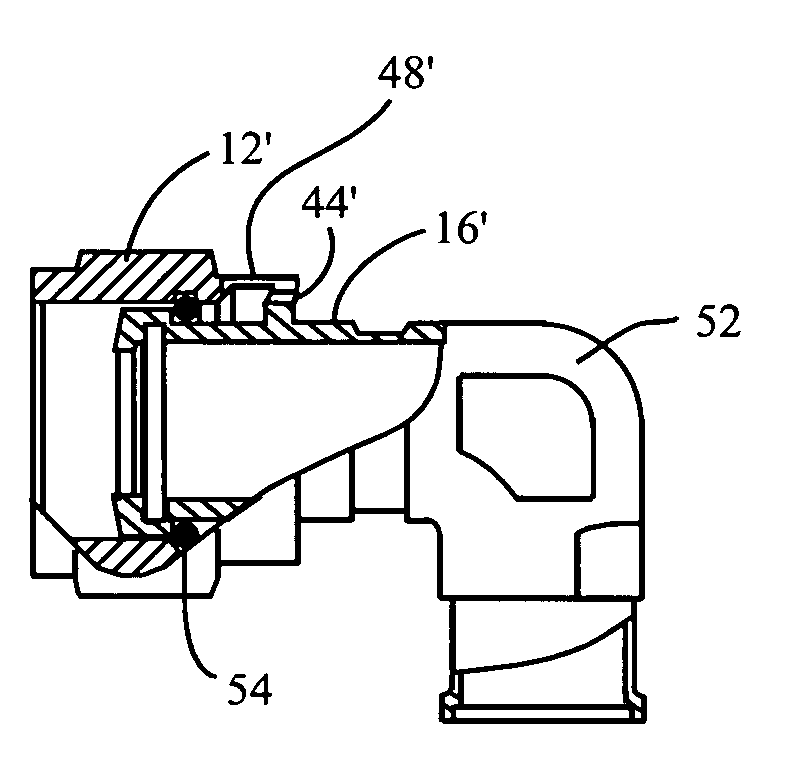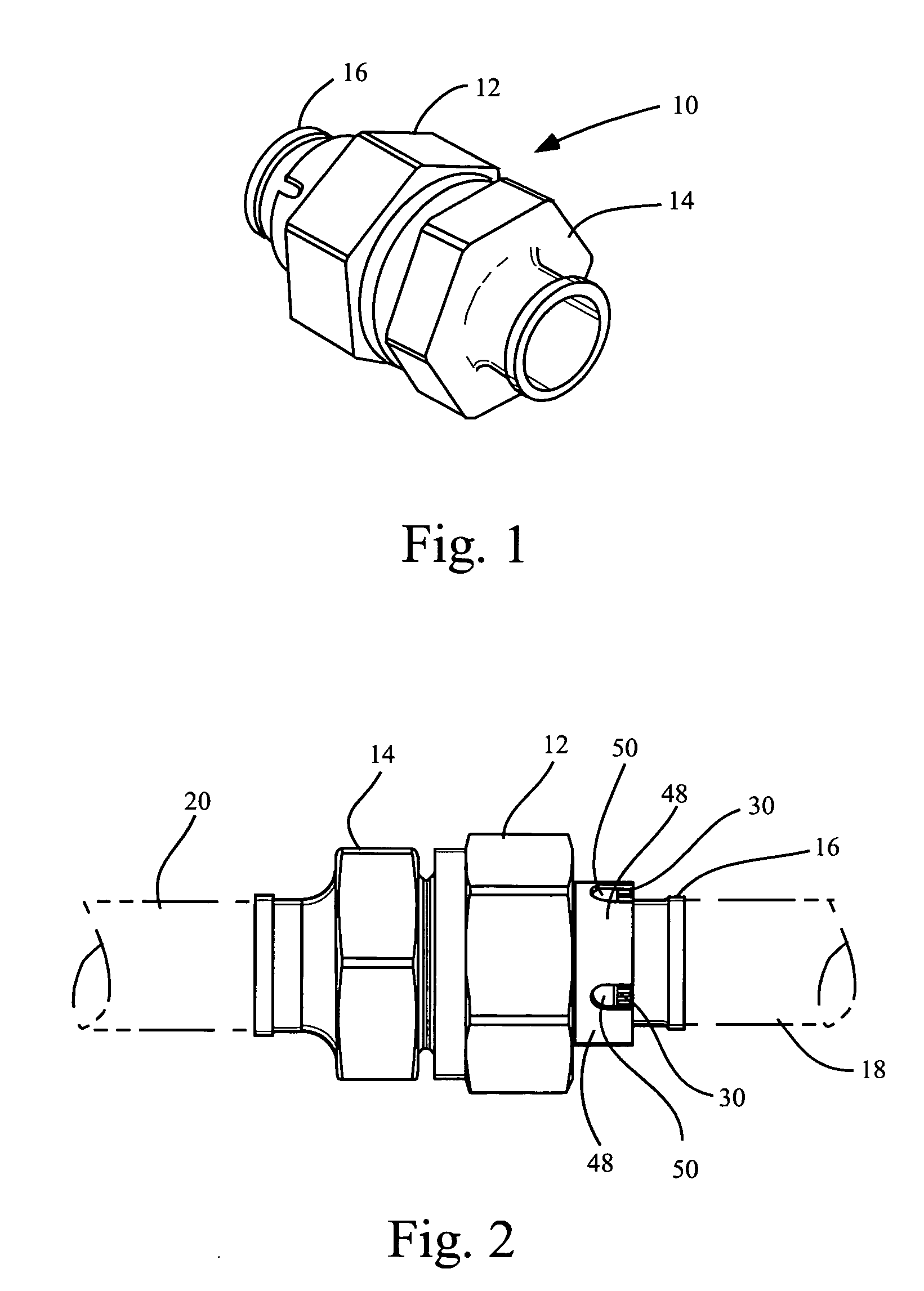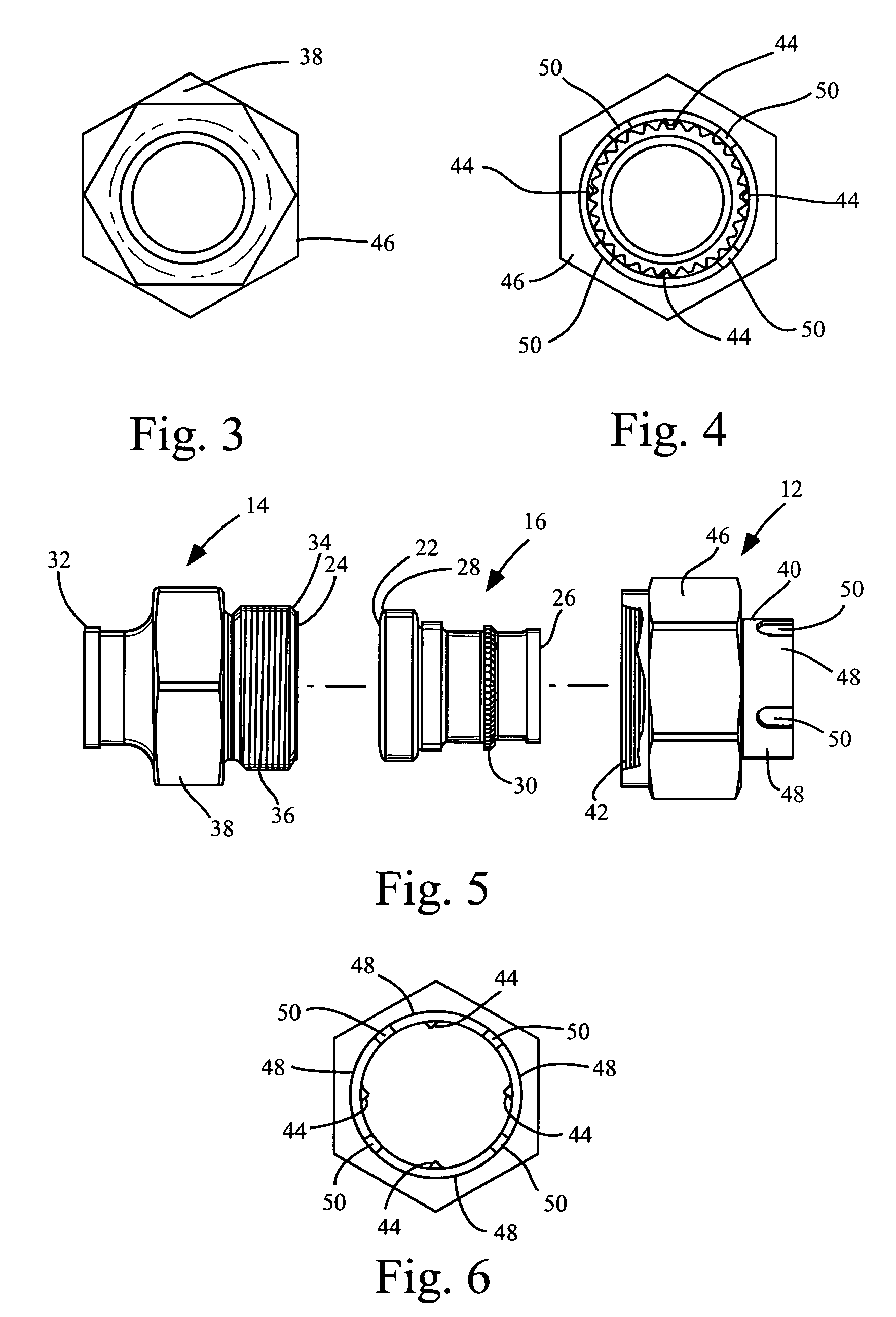Lockwireless coupling assembly
a technology of coupling assembly and lock wire, which is applied in the direction of pipe-joints, mechanical devices, joints with sealing surfaces, etc., can solve the problems of loose connection, unsatisfactory means of securing the joint, and loosening of the lock wire, so as to prevent leakage across the seal, facilitate visual confirmation, and prevent leakage
- Summary
- Abstract
- Description
- Claims
- Application Information
AI Technical Summary
Benefits of technology
Problems solved by technology
Method used
Image
Examples
Embodiment Construction
[0020]FIG. 1 shows the basic components of an embodiment of the disclosed coupling 10 in an assembled configuration, but shown without the connecting fluid conduits. The coupling 10 comprises a nut member 12, a connector member 14, and a ferrule member 16 which is only partially shown in FIG. 1. As shown in FIG. 2, the coupling 10 is utilized to connect fluid bearing conduit members which may be disposed in an opposite facing configuration as shown in FIG. 2, that is, where the fluid bearing conduit members are in axial alignment. An alternative embodiment, as shown in FIG. 7 through 9 may be utilized in which the fluid bearing conduit members are in a ninety-degree configuration.
[0021] First fluid conduit 18 is connected by the coupling 10 to a second fluid conduit 20. The second fluid conduit 20 is attached and sealed to connector member 14 by means known in the art, such as by welding, dynamic seal beam, flaring, flareless connection, crimping, swaging, lock ring, or other means...
PUM
 Login to View More
Login to View More Abstract
Description
Claims
Application Information
 Login to View More
Login to View More - R&D
- Intellectual Property
- Life Sciences
- Materials
- Tech Scout
- Unparalleled Data Quality
- Higher Quality Content
- 60% Fewer Hallucinations
Browse by: Latest US Patents, China's latest patents, Technical Efficacy Thesaurus, Application Domain, Technology Topic, Popular Technical Reports.
© 2025 PatSnap. All rights reserved.Legal|Privacy policy|Modern Slavery Act Transparency Statement|Sitemap|About US| Contact US: help@patsnap.com



